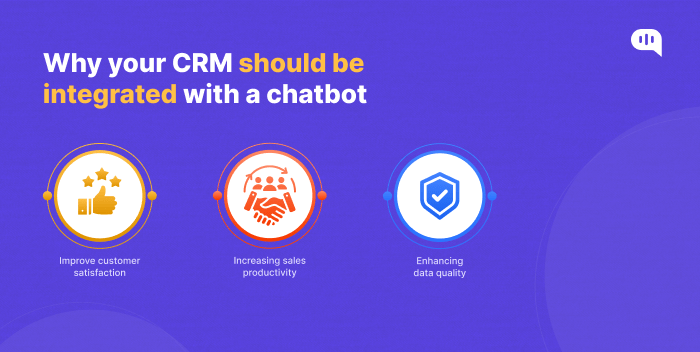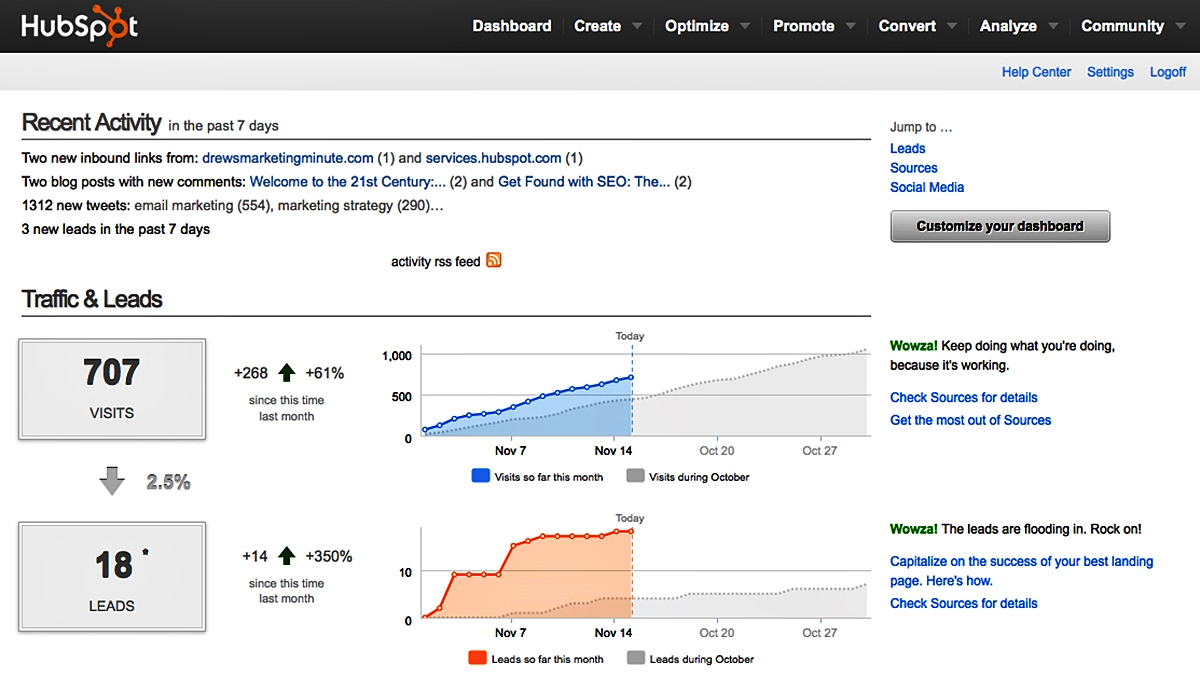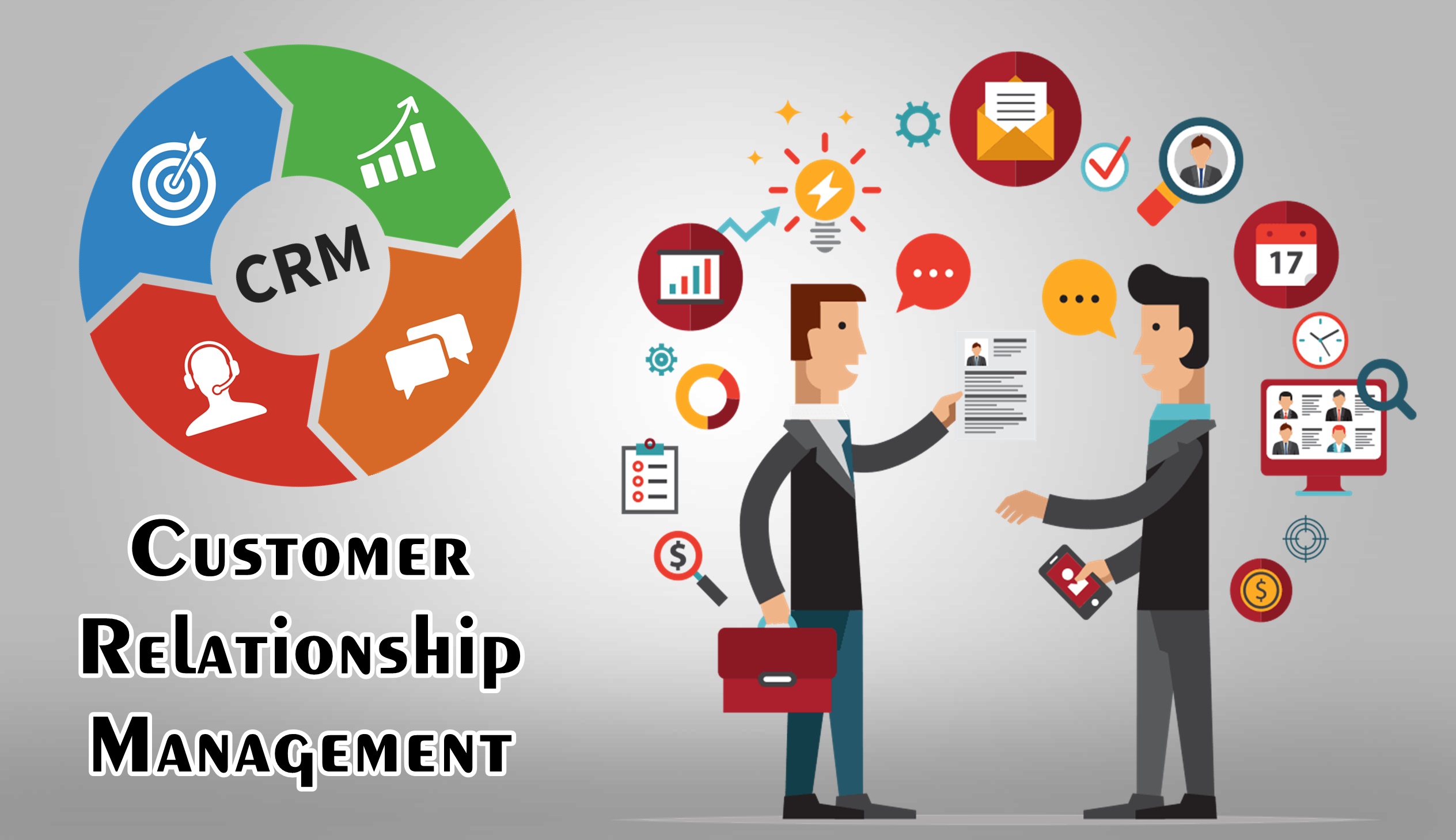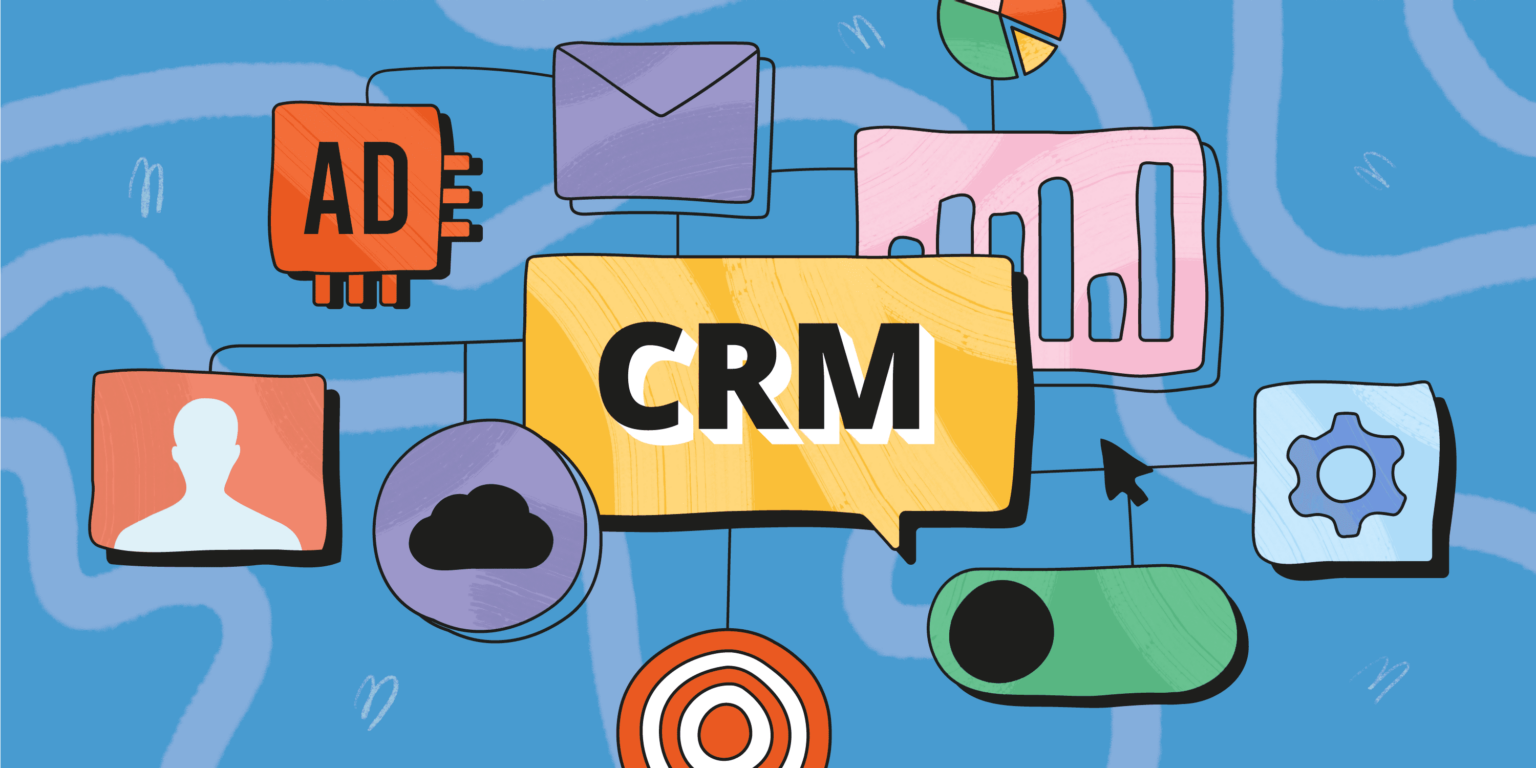Supercharge Your Marketing: CRM & Chatbot Integration for Unprecedented Growth

In today’s fast-paced digital landscape, businesses are constantly seeking ways to streamline operations, enhance customer experiences, and boost their bottom lines. One of the most effective strategies for achieving these goals is the integration of Customer Relationship Management (CRM) systems and chatbot technology. This powerful combination, often referred to as CRM marketing chatbot integration, empowers businesses to automate tasks, personalize interactions, and drive significant growth. Let’s delve deep into the world of CRM and chatbot integration, exploring its benefits, implementation strategies, and real-world examples.
Understanding the Core Components: CRM and Chatbots
Before we explore the synergy between CRM and chatbots, it’s crucial to understand each component individually. This foundation will help you grasp the full potential of their integration.
What is a CRM System?
A Customer Relationship Management (CRM) system is a software solution designed to manage and analyze customer interactions and data throughout the customer lifecycle. Think of it as the central hub for all things customer-related. CRM systems help businesses:
- Centralize Customer Data: Store and organize all customer information in a single, accessible location. This includes contact details, purchase history, communication logs, and more.
- Improve Customer Relationships: Provide a 360-degree view of each customer, enabling personalized interactions and proactive customer service.
- Automate Sales and Marketing Processes: Automate repetitive tasks, such as lead nurturing, email marketing, and sales follow-ups, freeing up valuable time for your team.
- Enhance Sales Efficiency: Empower sales teams with the information and tools they need to close deals faster and more effectively.
- Gain Actionable Insights: Analyze customer data to identify trends, understand customer behavior, and make data-driven decisions.
Popular CRM platforms include Salesforce, HubSpot, Microsoft Dynamics 365, Zoho CRM, and Pipedrive.
What is a Chatbot?
A chatbot is a computer program designed to simulate conversation with human users, especially over the internet. These virtual assistants can be deployed on various platforms, including websites, messaging apps (e.g., Facebook Messenger, WhatsApp), and mobile apps. Chatbots leverage natural language processing (NLP) and machine learning (ML) to understand user queries and provide relevant responses. They offer several advantages:
- 24/7 Availability: Provide instant support and information around the clock, ensuring customers can get help whenever they need it.
- Instant Response Times: Offer immediate answers to frequently asked questions, reducing wait times and improving customer satisfaction.
- Cost-Effectiveness: Automate customer service tasks, reducing the need for human agents and lowering operational costs.
- Lead Generation: Qualify leads, collect contact information, and guide potential customers through the sales funnel.
- Personalized Experiences: Tailor interactions based on user data and preferences, creating a more engaging and relevant experience.
There are two main types of chatbots: rule-based and AI-powered. Rule-based chatbots follow a predefined set of rules and scripts, while AI-powered chatbots use machine learning to understand and respond to more complex queries.
The Power of Integration: Why CRM & Chatbot Integration Matters
Integrating CRM and chatbots creates a powerful synergy that transforms the way businesses interact with their customers. This integration allows you to leverage the strengths of both technologies to achieve remarkable results.
Benefits of CRM & Chatbot Integration
- Enhanced Customer Service: Chatbots can access customer data from the CRM to provide personalized support, answer questions based on purchase history, and resolve issues quickly. This leads to higher customer satisfaction and loyalty.
- Improved Lead Generation and Qualification: Chatbots can interact with website visitors, collect lead information, and qualify leads based on their responses. This data is then automatically stored in the CRM, allowing sales teams to focus on the most promising prospects.
- Streamlined Sales Processes: Chatbots can guide leads through the sales funnel, answer product questions, provide pricing information, and even schedule demos or consultations. This streamlines the sales process and helps sales teams close deals more efficiently.
- Personalized Marketing Campaigns: CRM data can be used to personalize chatbot interactions, tailoring messages and offers to individual customer preferences and behaviors. This leads to higher engagement and conversion rates.
- Increased Efficiency and Productivity: Automating tasks with chatbots frees up human agents to focus on more complex issues and strategic initiatives. This improves overall efficiency and productivity across the organization.
- Data-Driven Insights: The integration allows you to track and analyze customer interactions across both platforms, providing valuable insights into customer behavior, preferences, and pain points. This data can be used to optimize marketing campaigns, improve product development, and enhance customer service.
- Reduced Costs: Automating customer service and sales tasks with chatbots can significantly reduce operational costs, such as labor costs and training expenses.
Implementing CRM & Chatbot Integration: A Step-by-Step Guide
Successfully integrating your CRM and chatbot requires careful planning and execution. Here’s a step-by-step guide to help you through the process:
- Define Your Goals and Objectives: Before you begin, clearly define your goals for the integration. What do you want to achieve? (e.g., improve customer service, increase lead generation, streamline sales processes) This will guide your decisions throughout the implementation process.
- Choose the Right Platforms: Select a CRM and chatbot platform that meet your specific needs and budget. Consider factors such as features, integrations, scalability, and ease of use. Ensure that the platforms are compatible and offer integration capabilities.
- Plan Your Integration Strategy: Determine how you want the CRM and chatbot to interact. What data will be shared between the two platforms? What workflows will be automated? Create a detailed integration plan that outlines the specific steps involved.
- Choose an Integration Method: There are several methods for integrating your CRM and chatbot, including:
- Native Integrations: Some CRM and chatbot platforms offer native integrations, which are pre-built and easy to set up.
- API Integrations: APIs (Application Programming Interfaces) allow you to connect the two platforms and share data. This method offers more flexibility and customization options.
- Third-Party Integration Platforms: Platforms like Zapier and Integromat (now Make) can connect your CRM and chatbot without requiring any coding.
- Set Up Data Mapping: Map the data fields between your CRM and chatbot. This ensures that data is transferred accurately between the two platforms.
- Configure Your Chatbot: Design and configure your chatbot to handle customer interactions. Define the conversation flows, set up automated responses, and integrate it with your CRM.
- Test Thoroughly: Test the integration thoroughly to ensure that it’s working as expected. Check that data is being transferred correctly and that the chatbot is responding appropriately to customer queries.
- Train Your Team: Train your team on how to use the integrated system, including how to access customer data, manage chatbot interactions, and troubleshoot any issues.
- Monitor and Optimize: Continuously monitor the performance of the integrated system and make adjustments as needed. Analyze customer interactions, track key metrics, and optimize your chatbot flows to improve efficiency and effectiveness.
Real-World Examples of CRM & Chatbot Integration in Action
Let’s explore some real-world examples of how businesses are leveraging CRM and chatbot integration to achieve impressive results:
E-commerce Retailer
An e-commerce retailer integrated its CRM with a chatbot on its website and Facebook Messenger. The chatbot:
- Provides 24/7 customer support, answering questions about products, shipping, and returns.
- Collects customer information and qualifies leads.
- Personalizes product recommendations based on customer purchase history and browsing behavior (retrieved from the CRM).
- Automates the order tracking process.
Result: The retailer experienced a significant reduction in customer service costs, increased sales conversions, and higher customer satisfaction.
Financial Services Company
A financial services company integrated its CRM with a chatbot on its website and mobile app. The chatbot:
- Answers frequently asked questions about financial products and services.
- Qualifies leads and collects contact information.
- Schedules appointments with financial advisors.
- Provides personalized financial advice based on customer data from the CRM.
Result: The company saw a significant increase in lead generation, improved customer engagement, and enhanced customer service.
Healthcare Provider
A healthcare provider integrated its CRM with a chatbot on its website and mobile app. The chatbot:
- Answers questions about appointments, insurance, and medical procedures.
- Schedules and reschedules appointments.
- Provides appointment reminders.
- Gathers patient information before appointments, streamlining the check-in process.
Result: The healthcare provider reduced administrative costs, improved patient satisfaction, and increased appointment adherence.
Choosing the Right CRM and Chatbot for Your Business
The selection of the right CRM and chatbot platforms is a crucial decision that can significantly impact the success of your integration. Consider the following factors:
CRM Considerations
- Features: Does the CRM offer the features you need, such as contact management, sales automation, marketing automation, and reporting?
- Scalability: Can the CRM handle your current and future business needs?
- Integrations: Does the CRM integrate with other tools you use, such as email marketing platforms and accounting software?
- Ease of Use: Is the CRM user-friendly and easy for your team to learn and use?
- Cost: What is the cost of the CRM, and does it fit within your budget? Consider both the initial setup costs and ongoing subscription fees.
- Customer Support: Does the CRM provider offer adequate customer support?
Chatbot Considerations
- Platform: On which platforms do you want to deploy your chatbot (e.g., website, Facebook Messenger, WhatsApp)?
- Features: Does the chatbot offer the features you need, such as natural language processing (NLP), AI-powered conversations, and integration capabilities?
- Customization: Can you customize the chatbot’s appearance and conversation flows to match your brand?
- Ease of Use: Is the chatbot easy to set up and manage?
- Integration: Does the chatbot integrate with your CRM and other business systems?
- Analytics: Does the chatbot provide analytics and reporting on chatbot performance?
- Cost: What is the cost of the chatbot, and does it fit within your budget? Consider both the initial setup costs and ongoing subscription fees.
Some popular CRM platforms include Salesforce, HubSpot, Microsoft Dynamics 365, Zoho CRM, and Pipedrive. Popular chatbot platforms include ManyChat, Chatfuel, Intercom, and Drift.
Best Practices for CRM & Chatbot Integration
To maximize the effectiveness of your CRM and chatbot integration, follow these best practices:
- Start Small: Begin with a pilot project to test the integration and refine your approach before rolling it out across your entire organization.
- Focus on Customer Experience: Design your chatbot interactions with the customer in mind. Make sure the chatbot provides helpful and relevant information and offers a seamless experience.
- Personalize Interactions: Use CRM data to personalize chatbot interactions and tailor messages and offers to individual customer preferences and behaviors.
- Provide Human Hand-Off: Ensure that customers can easily connect with a human agent if the chatbot cannot resolve their issue.
- Monitor and Analyze Performance: Track key metrics, such as chatbot engagement, customer satisfaction, and conversion rates, to identify areas for improvement.
- Continuously Optimize: Regularly review and optimize your chatbot flows and CRM integrations to ensure they are performing optimally.
- Prioritize Data Security: Implement robust security measures to protect customer data and ensure compliance with data privacy regulations.
- Train Your Team: Provide training to your team on how to use the integrated system and how to handle customer interactions.
The Future of CRM and Chatbot Integration
The integration of CRM and chatbots is a rapidly evolving field, and we can expect to see even more innovative applications in the future. Here are some trends to watch:
- AI-Powered Chatbots: AI-powered chatbots will become even more sophisticated, with improved natural language understanding and the ability to handle more complex customer queries.
- Hyper-Personalization: CRM and chatbot integration will enable businesses to deliver hyper-personalized experiences, tailoring interactions to individual customer preferences and behaviors.
- Proactive Customer Service: Chatbots will proactively reach out to customers to offer assistance, provide updates, and resolve issues before they escalate.
- Integration with Emerging Technologies: CRM and chatbot integration will expand to include integration with emerging technologies, such as voice assistants and augmented reality.
- More Seamless Integrations: Expect to see more native integrations between CRM and chatbot platforms, making it easier to set up and manage the integration.
- Focus on Conversational Commerce: Chatbots will play an increasingly important role in conversational commerce, allowing customers to browse products, make purchases, and receive support directly within the chatbot interface.
As these technologies continue to advance, the opportunities for businesses to leverage CRM and chatbot integration will only continue to grow. By embracing these advancements, businesses can gain a significant competitive advantage and achieve unprecedented levels of growth.
Conclusion: Embracing the Power of Integration
CRM and chatbot integration is a powerful strategy for businesses looking to streamline operations, enhance customer experiences, and drive growth. By integrating these two technologies, businesses can automate tasks, personalize interactions, improve lead generation, and enhance sales processes. Implementing this integration requires careful planning, the right tools, and a commitment to continuous optimization. By following the best practices outlined in this guide, businesses can unlock the full potential of CRM and chatbot integration and achieve remarkable results. The future of business is conversational, and by embracing this integration, you’re positioning your company for success in the years to come.



